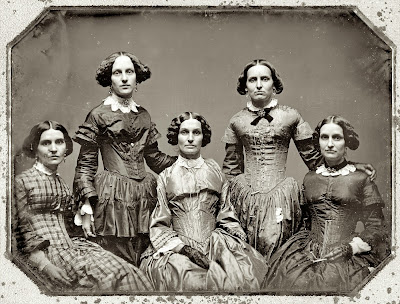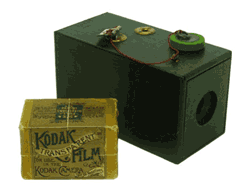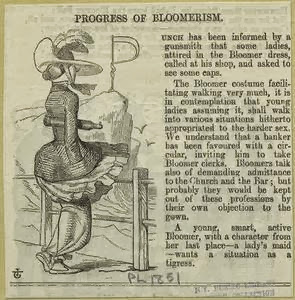While feeling extremely distractible and editing a scene in which my characters are out for an evening in London, I came across
this wonderful blog. It quotes at length from
one of my favorite recent books on Constance Wilde on the subject of Dorothy Restaurant, which was a haven for the "New Woman" in 1890s London. This got me thinking of restaurant culture in 1890s London. I'm also in the middle of writing/editing a passage in which my characters are out for a night on the town in 1890.
With this helpful guide, the internet and my knowledge of the time and place, I present my favourite restaurants in 1890s London.
10. Benekey's
Meeting a friend to discuss some ideas? Look how private the booths are in Benekey's. Public houses or pubs were not usually recommended for their food or drink, but Benekey's served one of the finest glasses of wine in London. Karl Baedeker, the author of
London and Its Environs: Handbook for Travellers, recommends it, if for that reason alone. Otherwise, there seems to be no trace of the place. Probably because it wasn't a place to be seen, but rather to hide away with a friend and talk, talk, talk... that is what good wine is for, isn't it?
Benekey's isn't around anymore, but its booths are still there and its address currently houses to a new pub, called the Cittie of Yorke. Of the current establishment,
one reviewer wrote:
The copper sign swinging over pedestrians on High Holborn speaks of ‘beer brewed at Yorkshire’s oldest brewery’; the sign just out from a mock-Tudor façade above reads ‘established on the site of a public house in 1430’.
So far, so faux, but the interior is authentically dingy, wobbly and warren-like, the kind of place in which to film a period drama. The main room is lined with conspiratorial dark wood alcoves, with old barrels over the long bar and framed portraits from Vanity Fair c.1870.
Though I don't think that review was intentionally positive, it makes me really want to go there! According to Baedeker: "In the season" during the 1890s, it was "sometimes necessary to engage a table beforehand," but that went for most of these places!
9. Claridge's
This place went through a lot of changes in the 1890s, but that was due to the ambition of its owners and its popularity and success. It was purchased by the Savoy Group in 1894, had some of the same management as
the Savoy Hotel.
In the 1890s, one might enjoy an orchestra, during afternoon tea in the central court from 4-6pm and from 7-9:30 in the restaurant. Like the Savoy Hotel, it had open terraces with a view of the river. As a hotel, it has 203 rooms and suites and went on from the 1890s to have an exciting, especially in WWII when it became the birthplace of Yugoslavian Crown Prince Alexander (1945).
Unlike Benekey's, this is where one might bring their fiance's parents because it was more of an event to go there. The entertainment meant you didn't have to spend the whole time talking to the people you were with and the service/food was first class. It also would have made a really good impression.
8. The Criterion Restaurant in Piccadilly Circus
The Criterion Theatre is an underground theatre in Piccadilly Circus that seats 600 people - not underground as in secret, but actually physically underground. The facade on the street is just the restaurant and box office.
Dining in the Criterion would have been an incredible experience. I imagine it full of rollicking affluent young Londoners. Baedeker talks about the paintings he saw there by "eminent artists," the mosaic on the ceiling in the Marble Hall, it had a number of rooms, including and "American restaurant," a lager-beer sloon and a smoking room. (I imagined people smoking everywhere.) Going down the stairs to the theatre would have also been an adventure, especially with the number of opiates available in the 1890s.
Throughout the era, the whole place was managed by Felix William Spiers, who served the same menu in his extensive railway refreshment rooms. A meal that you might eat on a train, like a meal you might eat on a plane, doesn't sound very appetizing today, but first class dining rooms on trains in the 1890s were quite another story! Train passengers performed their class identities by spending more to have access to these cars.
7. Simpson's-in-the-Strand
Fancy some fish and a game of chess?
Simpson's-in-the-Strand started out as a smoking room in 1828, then it quickly turned into a coffee house. By mid-century, it was known for serving traditional English food, especially roast meats and the classic fish & chips. Writers enjoyed dining there straight through the twentieth century. P.G. Wodehouse called it "a restful temple of food."
Simpson's is also located near
Fleet Street, where all the journalists worked. Baedeker enjoyed fish & chips there. In the 1890s, our writers probably also enjoyed a game of chess there. Chess was a feature of Simpson's-in-the-Strand's early days as a coffee house, where well-educated gentlemen would rest, read the papers, discuss politics and play a game of chess in and on the establishments ample chairs and divans. Until it was bought by the Savoy Group at the end of the decade, it was also home to the largest mahogany table in existence.
This is the kind of place that I imagine journalists going in the morning or at lunch, but in a laid-back men's club sort of way. Unless specified, we can presume that most restaurants did not accommodate women dining alone. In some cases, women may have been barred entirely. Consequently, I would only have gone to Simpson's-in-the-Strand, if I were of that class of well-educated Victorian gentleman.
6. Holborn Restaurant
The Holborn Restaurant was part of the casino and had a ladies' dining room. Baedeker called Holborn "an extensive and elaborately adorned establishment with grill-room, luncheon-buffets [...] in the Grand Salon from 6 to 9 p.m., with music [...] 'grilled dinner' in the 'Ladies' Grill Room'" When Baedeker talks about "grilled dinners," he means steak. Who doesn't want to eat steak in a London casino in the 1890s?
It left a lasting impression on, British novelist and dramatist, Edmund Yates, who wrote:
The Holborn Casino was a much quieter place of resort than its rival, and was frequented by a different class: there was some element of respectability among its female visitors, while among the men the genus "swell," which predominated at the other place, was here almost entirely absent, the ordinary attendants being young fellows from the neighbouring Inns of Court, medical students, Government clerks, with a sprinkling of the shopocracy.
Contrary to what I initially suspected, "shopocracy" doesn't actually refer to government by the retail industry. It's actually just an adjective for a group of shopkeepers. Enabling women to shop was the main mission of these eateries. However, as you can see in the passage from Yates, a woman dining out was still a controversial thing, by the fact that "there was some element of respectability among its female visitors," which implies in other establishments the women weren't respectable. People often assumed an unaccompanied woman in a restaurant was a prostitute, which is why ladies' dining rooms really got their start in department stores. Dining rooms for women shoppers gave them some respectability and allowed them to shop longer. In this busy shopping area, there was another ladies' dining room across the street, which also served steaks. Cheaper and probably not as good!
6. Dorothy Restaurant
Restaurants for women were a natural progression of the increasing independence of middle-class women. In the later part of the nineteenth century, many women would take the train into the city to go shopping. While a woman couldn't dine alone, public washrooms were inaccessible to women. Putting tea rooms in shops enabled women to stay in the city and shop all day.
Dorothy Restaurant enabled women to just hang out with other women and do things they couldn't do anywhere else to relax, like smoking and drinking. Strongly linked to the "New Woman," Dorothy Restaurant was very cutting edge, but only stayed open for six years 1889-1895.
4. Pagani's
Artists and musicians in the 1890s loved Pagani's restaurant with its art nouveau frontage near Queen's Hall on Langham Place. It first opened in 1871 and its famous Artist Room's walls were decorated with more than 5,000 notes and signatures of its famous patrons, including Ignacy Jan Paderewski, Giacomo Puccini, Cécile Chaminade, Emma Calvé, Plançon, Nellie Melba, Mortimer Menpes, Paolo Tosti, Sarah Bernhardt, James Abbott McNeill Whistler. Baedeker advised visitors in the 1890s that the Artist Room was reserved for "private parties," so if you are throwing a private party in the 1890s - this is where I recommend you do it.
In the 1890s, Oscar Wilde once dined on calf's brains and lark-and-steak pie in the Artist's Room with Lillie Langtry and the Prince of Wales.
Dinners and Diners (1899) by Lieut.-Col. Newnham-Davis gives the most detailed account of a dining experience in the downstairs public room.
On the Saturday I went to Pagani’s, secured a table for the next evening in the room on the first floor, a very pretty dining-room with soft blue curtains to the windows, a blue paper on the walls, shaded electric lights, and a little bow- window at the back, which makes the snuggest of nooks. Then M. Giuseppe Pagani, one of the two proprietors, having appeared, we talked over the important matter of the menu. The difficulty that vexed our minds was whether filets de sole Pagani or turbot à la Pellegrini would best suit a lady’s appetite. Finally the sole won the day. I hesitated a moment over the Bortsch soup, for it has become almost as much a standing dish as croûte au pot in most restaurants ; but Bortsch is the customary Sunday soup at Pagani’s, so it had to be included in the menu.
This was our list completed
Hors-d’oeuvre variés.
Potage Bortsch.
Filets de sole Pagani.
Tournedos aux truffés.
Haricots verts sautés.
Pommes croquettes.
Perdreau Voisin.
Salade.
Soufflé au curaçoa.
For Newnham-Davis's guest, even dining on the first floor was an event: "I told Mrs. Tota that at least half the guests were musicians or singers, and immediately she was all attention." The funniest part of his description to me is part that tells us about the Artist Room and recalls The Importance of Being Earnest:
When we came to the little room with its ruby velvet curtains and mantel drapings, its squares of what looks like brown paper, at about the height of a man’s head, covered with drawings and writings, and protected by glass, its framed drawings and paintings, Mrs. Tota turned to me and asked me if I often brought my invalid maiden aunt to dine here.
“Invalid maiden aunt? “ I said with astonishment, but remembered in a second that I had mentioned some such relative (or was it an uncle?) when we dined in the private room at Kettner’s. Mrs. Tota laughed and turned to M. Meschini, who was beginning to explain the various works of art.
I wonder if he ever called his invalid maiden aunt "
Bunbury."
3. Ship and Turtle Tavern
It is worth a pilgrimage to the City to taste turtle soup and “fixings” at the “Ship and Turtle,” Leadenhall-street.
The above is a quote from the Dickens Dictionary of London (1879) and it was a real place that was still popular in the 1890s.
This pub was established by 1377 and was rebuilt in 1887 and again in 1969. In its later years it was called Vino Veritas, but it closed and was demolished in 2008. For 465 years, from 1377 to 1835 it was run by a succession of widows. During the Victorian era, the Ship and Turtle Tavern even supplied several of the West-end clubhouses. To ensure its patrons they were eating real turtle, turtles were kept on display in aquariums for everybody to see!
Any place with a 500 year-long tradition of empowering women is going to make my list, even if I dislike their treatment of turtles.
2. Cafe Royal
Since about 75% of my blog has something to do with Oscar Wilde, the Cafe Royal had to be one of my top three restaurants in London in the 1890s. Above are paintings of the Cafe Royal by Charles Ginner, William Orpen and Adrian Allison. They were all painted in the 1910s, but Wilde haunted the place in the 1890s.
Jonathan Black, Fiona Fisher and Penny Sparke helped me find those images and describe the cafe as:
The Café Royal, located at 68 Regent Street and depicted by Charles Ginner in 1911 (Tate N05050 fig.3), enjoyed a special reputation among artists in the early years of the twentieth century. It was opened in 1865 by a Breton wine merchant, Daniel Thévenon, as one of London’s first French-style restaurants. By the late 1890s it had become firmly established as a key location for the British avant-garde to dine and, more importantly, to be seen in. In particular, the Café’s central mirrored dining room, known as the Domino Room, served as a convivial meeting place for artists such as Augustus John, Philip Wilson Steer and William Orpen. In his memoirs, another of its habitués, the writer Osbert Sitwell, recalled the Domino Room’s pre-1914 ‘smoky acres of painted goddesses and cupids and tarnished gilding, its golden caryatids and garlands, and its filtered submarine illumination – composed of tobacco smoke, of the flames from the chafing dishes and the fumes from food, of the London fog outside and the dim electric light within’.

Thévenon fled bankruptcy in France in 1863, then changed his name to Daniel Nichols when he arrived in Britain with his wife, Célestine, and just five pounds in cash. His son, also called Daniel Nicols, inherited the Cafe Royal and it flourished under his management with a reputation for having the greatest wine cellar in the world.
Did I mention Oscar Wilde liked to hang out there? So did Aleister Crowley, Virginia Woolf, Winston Churchill, Noël Coward, Brigitte Bardot, Sir Max Beerbohm, George Bernard Shaw, Sir Jacob Epstein, Mick Jagger, Elizabeth Taylor, Muhammad Ali and Diana, Princess of Wales. In the 1890s, it had a Bohemian reputation and served both royals and rogues.
On the right, is a copy of a menu I found from 1895. If it were the 1890s, I would go there everyday and wait until I got the chance to meet Oscar Wilde!
1. Ye Olde Cheshire Cheese
Conveniently located near the heart of London journalism is that literary eatery, Ye Olde Cheshire Cheese. I couldn't leave British Columbia until I spotted an orca whale and I wouldn't be able to leave 1890s London (or even modern London), until I dined at Ye Olde Cheshire Cheese!
Its address (145 Fleet Street) has been a pub since 1538. Its vaulted cellars belonged to a Carmelite Monastery which occupied the site in the thirteenth century. Like the Criterion, it is far more than what it looks like from the entrance in the alley.
Oliver Goldsmith, Mark Twain, Alfred Tennyson, Sir Arthur Conan Doyle, G.K. Chesterton and Dr. Samuel Johnson all frequented the place and many literary associations have sprung up there as a consequence. During a Johnson Club supper on 13 December 1892:
...an eloquent gentleman, present, an Irish Ex MP, pointed out that when Dr Johnson acted on his famous suggestion "let us take a walk down Fleet Street" the Cheshire Cheese must of necessity have been included among his places of call.
The Rhymers' Club was founded in Ye Olde Cheshire Cheese in 1890 by W. B. Yeats and Ernest Rhys. The poets, who were its members, produced anthologies in 1892 and 1894.
I'm really afraid that, if I ever get the chance to dine there, I won't want to leave.
Follow me on Twitter @TinyApplePress and like the Facebook
page for updates!

























































